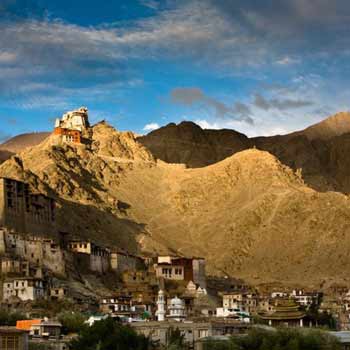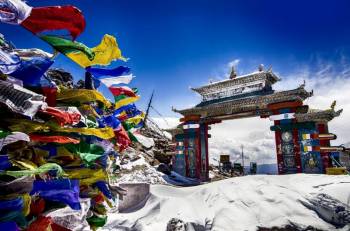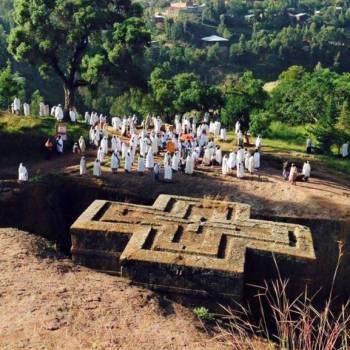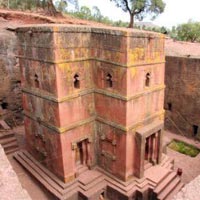+91-8929175340
On this multi-themed safari, emphasizing natural history with strong measures of geology, archaeology and culture, you will observe much of the wildlife unique to the Rift Valley and northern Africa. The great natural and ecological diversity of Ethiopia from regions below sea level to the highest alpine plateaus in Africa rivals that of African nations better known for wildlife tourism.
Many of the birds and animals you will see are only found here and not farther south in East Africa. Your expert local safari guide will offer knowledgeable interpretation and insight to make this one of your best wildlife safaris in Africa. Visit Bale Mountains and Omo valley to explore Ethiopian endemic species and beautiful tribes respectively.
Watching the Hamer ‘Bull Jumping’
Meeting the Mursi ladies, known for their lip adornments
Seeing the wildlife, such as warthog, guerza monkey and Simien wolf
Day 1 :
Upon arrival in Addis Ababa, you will be accompanied by Zagwe Ethiopia tour employee and transferred to your hotel . After checking in to your hotel take a city tour to include a visit to the National Museum ,the Ethnographic Museum, St George’s Cathedral and a panoramic view of the capital from the Entoto Mountain.
Day 2 :
Depart early from the hotel, for the drive to Arba Minch (450km, 8 hours), via the 10th century stone stelae of Tiya and Butajira.
Day 3 :
After breakfast, drive up to Chencha. The town is set at an altitude of 2,900m in the Guge Hills north of Arbaminch. A dramatic series of switchbacks that take you 1,600m higher in a mere 22 km, brings you to the home of the Dorze people, who are renowned as cotton weavers. Here, the bee-hive-shaped dwellings stand up to 6 m tall and are constructed entirely from organic materials − bamboo sticks, grass and enset (similar to banana) . These are among the most distinctive traditional structures to be seen anywhere in Africa. The main concentration of traditional houses is at the village of Dorze, where you may also make a stop. After lunch, take a boat trip on Lake Chamo to the Crocodile Market.
Day 4 :
Drive from Arbaminch to Jinka via Konso and Woyito. On the way, at Berhaile/Woyito, you will see the friendly Tsemai Tribe. Lunch at Woyito. After lunch, proceed to Jinka stopping en route to visit the beautiful Thursday Make of the Ari Tribes.
Overnight at Hotel
Day 5 :
Early morning, continue from Jinka to Mago National Park (200km – 4 hours). Meet your Park Scout and continue to the village of the Mursi Tribes. The Mursi Tribes are one of the tribes in South Ethiopia, whose ladies mutilate their lips as a sign of beauty. After your visit, continue back to Jinka and on to Turmi (127km – 3 hours).
Overnight at Hotel / Lodge
Day 6 :
After breakfast, drive from Turmi to Murule to visit the Karo tribes who live by the side of the Omo River. This morning, you will visit the village of the Karo Tribe, noted for their hair decoration, body painting and unique style of dressing. En route you will stop at a few of the Southern Ethiopian villages as well as visiting Dimeka to see the Hamer Market (subject to date of travel). A picnic lunch box will be provided at Dimeka.
The Hamer tribe is handsome, photogenic and friendly. The Karo and The Hamer are related in culture and they are the only people in the Omo Valley who allow marriage in between two tribes (Hamer and Karo). Like all small ethnic groups of the far South Omo area, they practice a combination of pastoralism and shifting agriculture mainly rain-fed. The main part of their life and economy is based on cattle herding and great wealth is measured by the number of cattle owned. These people are very famous for their hair styles, body painting and the rarely seen but always remembered ‘Bull Jumping’. Young men may choose their brides after successfully completing a Bull jump.
Continue back to Turmi at the end of the day (196km – 3 hours).
Overnight at Hotel or Lodge
Day 7 :
After breakfast, drive to Arbaminch via Er-bore, home to the Er-bore tribe (291km – 5 hours). They are closely related to the Borena Oromo and share their unique adornments such as aluminium bead necklaces. Proceed to Arbaminch stopping en route to visit traditional houses in Konso.
Overnight at Hotel or Lodge
Day 8 :
After breakfast, drive from Arbaminch to the lakeside city of Awassa (285km – 5 to 6 hours). On the way pass through land which produces the best banana, papaya, apple and mango in Ethiopia for the world market. Awassa is the largest city in southern Ethiopia and sits at an altitude of 1,685m. Lake Awassa is the smallest of the Rift Valley lakes in Ethiopia. Set in a volcanic caldera, it has no outlet, yet the water remains fresh and supports a rich variety of plankton and an abundance of fish. The dense scrub and fig woodland along the shore is well-preserved and teems with birds and monkeys.
Overnight at Hotel
Day 9 :
There will be an early-morning birding walk along Lake Awassa. After breakfast, head off for the Bale Mountains National Park, which lies in the highlands to the east of the Rift Valley (270km – 5 hours). The park protects Ethiopia’s second-highest mountain range, including Mount Tullo Deemtu, which at 4,377 m is the second highest peak in Ethiopia. The main attractions of the park are the wild alpine scenery, particularly at the 4,000m Sanetti Plateau, and the opportunity to see up to 15 endemic bird species, as well as unique wildlife such as the Simien wolf and mountain Nyala. The Bale Highlands are very green, cool by day and often very cold at night.
At the sprawling town of Shashemene, north of Awassa, we proceed east and travel via the towns of Kofele, Dodola and Adaba. From here on you will be treated to some of the most spectacular landscapes in southern Ethiopia: craggy peaks interspersed with streams and waterfalls, as well as wonderful wildflower displays – fields of blue and yellow wildflowers and stands of red-hot poker. A few kilometres before entering Dinsho, the road passes briefly through the Gaysay sector of Bale, where you are almost certain to see our first mountain Nyala and perhaps even a Simien wolf, and many fascinating birds including the endemic Rouget’s Rail.
A stop will be made at the park headquarters just beyond Dinsho, where there will be time to do the walking trail that leads through the surrounding juniper forest. It protects the main concentration of Bale’s mountain Nyala, an exceptionally handsome antelope. You should also see Menelik’s bushbuck, a species endemic to Ethiopia – superficially similar to the mountain Nyala, but much smaller. Also look out for warthog, bohor reedbuck and guerza monkeys. An unusual plant in the Dinsho area is the white-flowered Abyssinian rose, the only flowering rose indigenous to Africa.
The main habitats protected by Bale are African juniper and the fragrant Hagenia abyssinica woodland, montane forest and Afro-alpine moorland. The juniper-hagenia woodland lies at an elevation of between 2,500m and 3,300m and is mostly found on northern slopes, such as around the park headquarters. At similar elevations on the southern slopes the vast Harenna Forest is the park’s main stand of Afro-montane forest. The Afro-alpine moorland is found at above 3,500m, with the most extensive patches on the Sanetti Plateau. Dinsho is an excellent spot for montane forest endemic birds, while the Sanetti Plateau is the best place in Ethiopia to see highland endemics and unusual migrant raptors.
Later in the afternoon continue to Goba via the town of Robe. Goba is the capital of the region and lies in the cool, breezy foothills of the Sanetti Plateau.
Overnight at Hotel or Lodge
Day 10 :
After breakfast continue to the Sanetti Plateau, the highest point in the Bale National Park. It is cited as Africa’s largest expanse of Afro-alpine moorland, a montane habitat confined to altitudes of 3,500 to 4,500 m on East Africa’s tallest mountains. Because such habitats are isolated, they tend to display a very high degree of endemism, and Sanetti is no exception. From Goba we climb 1,300m. After 13 km we will be surrounded by clumped grey heather interspersed with lichen covered rocks and stands of giant lobelia. About halfway across the plateau the road skirts a series of crystal-clear tarns.
Simien wolves are unexpectedly common and, with luck, you will enjoy close-up views of Africa’s rarest canid. The wolf is far more common here than in the Simien Mountains in the north. The wolf population of around 400 was only made known to science in 1959. Generally they are very approachable and offer superb photo opportunities. Other characteristic mammals of the plateau are golden jackal, klipspringer, the Abyssinian hare, the endemic giant molerat, and a number of other small endemic burrowing rodents. The plateau also offers great birding opportunities: look for endemics such as blue-winged goose, spot-breasted lapwing and Rouget’s rail, all of which are common here.
At the Southern end of the Sanetti Plateau, the Harenna Forest Escarpment affords an astounding view of the forest almost 2,000m below.
Overnight at Hotel or Lodge
Day 11 :
Continue your exploration of the landscapes, flora and fauna of the Bale Mountains.
Overnight at Hotel
Day 12 :
Depart Goba for Dodola travelling via Dinsho and Adaba (400km – 7 to 7 hours). Here we turn north to travel along a scenic route that takes us through hilly countryside, initially still sporting the yellow and orange alloes that are characteristic of the Bale area, as well as large rural homesteads ringed by neat mud and euphorbia enclosures. After passing through Bekoji, continue through frosty moorland covered in heath-like plants. Bird enthusiasts should keep an eye open for wattled ibis and Abyssinian longclaw.
The next town is Asela, capital of the Arsi Zone. The area is notable for its fertile, extensively cultivated hills, where millet and maize fields are interspersed with stands of trees. The orderly green slopes are reminiscent of the English countryside.
Arrive at the sizeable, friendly and unusually modern-looking town of Nazret, on the fertile plateau that divides the Rift Valley from the central highlands. Here, join the surfaced road to Addis Ababa, 100 km distant. En route, pass through Debre Zeyit, the site of the famous victory by Ahmed Gragn over Emperor Lebna Dengal in 1529, which cleared the way for the region to be occupied by the Oromo. Further along see Mount Yerer, a four million-year-old extinct volcano set on the western Rift Valley wall.
In the evening, you will be invited to a farewell dinner party at one of the best traditional restaurants in Addis where you will have a chance to a taste variety of Ethiopian meals, and watch the folkloric dancers and music diversity of Ethiopia.
Overnight at Hotel
Day 13 :
Your last morning is free to explore Addis on your own, doing some last minute shopping or visiting before being transferred to the airport for your homebound flight.–A dayroom at the hotel can be booked .
End of the tour and Departure
Zagwee Ethiopia Tour and Travel View Profile
0 / 5
About Zagwee Ethiopia Tour and Travel
![]()
Zagwee Ethiopia Tour and Travel
0 /5 13D/12N
13D/12N
Shimla - Sangla - Kalpa - Kinnaur - Manali - Dharamshala - Dalhousie - Amritsar
08048026916
Get Quote 13D/12N
13D/12N
Tehran - Isfahan - Kashan - Yazd - Kerman - Tabas - Varzaneh,
 13D/12N
13D/12N
Guwahati - Shillong - Tawang - Cherrapunji - Bomdila - Golaghat - Mandla
08048119171
Get Quote 13D/12N
13D/12N
Bangalore - Mysore - Hassan - Goa City - Mumbai
 13D/12N
13D/12N
New Delhi - Mandawa - Bikaner - Jaisalmer - Jodhpur - Jaipur - Agra - Udaipur
 8D/7N
8D/7N
Addis Ababa - Axum - lalibela - Gondar - Bahirdar - Hawzen - wukro - mekele
 13D/12N
13D/12N
Bahir Dar - Axum - Adigrat - Addis Ababa - Gonder - Mekele
 18D/17N
18D/17N
Kathmandu - Lukla - Patan - Fatehpur Sikri - Goa City - Ha Noi - Doha - Addis Ababa